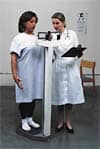A study shows a correlation between PAP therapy in post-traumatic stress disorder patients with comorbid sleep apnea and lessened insomnia severity.
Insomnia is the most common complaint expressed by post-traumatic stress disorder (PTSD) patients. While it’s not surprising that people who have experienced trauma may have difficulty with sleep, the appropriate treatment approach may not be so obvious.
Many PTSD patients may also be experiencing co-occurring obstructive sleep apnea (OSA), which could be contributing to insomnia symptoms. If the OSA is not detected, then these patients may continue to experience what may be preventable symptoms, says Barry Krakow, MD, a sleep specialist at Maimonides Sleep Arts & Sciences in Albuquerque, New Mexico.
In a retrospective review of patient charts, Krakow and a team of other researchers found a correlation between a decrease in insomnia severity and PAP therapy. Results of the nonrandomized study were published in the journal Military Medical Research.
“We can’t take for granted that we know why patients with PTSD are having sleep problems,” says Krakow, a co-author.
According to Krakow, insomnia and PTSD—commonly thought to be purely psychological disorders—could have underlying physical implications. For instance, the rates of OSA in PTSD patients is as high as 70% to 80%.
For this study, Krakow explains, “We wanted to ask the question: Well, what happens to their sleep problems when you treat their sleep apnea?”
Since a growing body of research has demonstrated an association between OSA treatments and decreases in insomnia severity, the researchers wanted to look at whether to expect similar outcomes when OSA is treated in PTSD patients. Would treating a PTSD patient with positive airway pressure (PAP) therapy decrease insomnia symptoms?
The study, which looked at data from the charts of 96 sleep clinic patients with moderate to severe PTSD, found an association between PAP treatment and insomnia improvement.
The researchers compared PAP adherent patients to those who did not use their PAP therapy as directed. The higher the number of hours of PAP therapy, the greater the improvement.
“It turns out that if you treat somebody with PTSD and insomnia with a PAP machine and they regularly use a PAP machine and they use it a lot of hours, then basically half the people had an elimination of their insomnia,” says Krakow. “That’s a big deal.”
In the future, he says, more research is needed to fully understand the depth and breadth of the physical implications of PTSD. “It is all coming together now, where people are starting to realize that PTSD is a physical disorder as well as a mental disorder.”
Lisa Spear is associate editor of Sleep Review.




